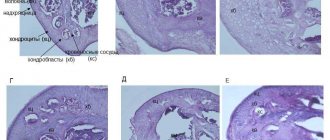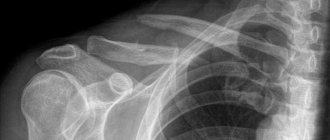According to the definition of WHO experts, osteoporosis (OP) is a metabolic disease of the skeleton, characterized by a decrease in bone mass, a violation of the microarchitecture of bone tissue and, as a result, fractures that occur with minimal trauma, for example, a fall from one’s own height, awkward movement, coughing, sneezing (so-called low-energy fractures), or without visible traumatic intervention [1].
AP is one of the most common diseases and significant medical and social problems. Thus, more than 200 million people worldwide suffer from AP, with the countries of North and South America, Europe and Japan accounting for more than 75 million patients [2,3]. Every year, AP causes more than 8.9 million fractures worldwide, of which more than 4.5 million occur in the Americas and Europe [2]. Data from the International Osteoporosis Foundation (IOF) [4] indicate that every three seconds the world experiences one osteoporetic fracture, and, starting from the age of 50, every third woman and every fifth man for the remaining will experience at least one osteoporetic fracture in their lifetime. It is estimated that the lifetime risk of a wrist, hip or spine fracture in the developed world is about 30-40%, approaching the risk of cardiovascular complications [2].
In the Russian Federation, about 14 million people (10% of the country’s population) suffer from AP [1]. At the age of ≥50 years, AP is detected in 34% of women and 27% of men, and signs of osteopenia, characterized by a decrease in bone mineral density (BMD) and also associated with the development of low-energy fractures, are detected in more than 40% of men and women [1]. A cross-sectional epidemiological study among the Russian urban population aged 50 years and older showed that 24% of women and 13% of men had previously suffered at least one low-energy fracture [1]. It is known that women develop AP and fractures more often than men. Thus, compared with men, women aged ≥50 years were 7 times more likely to have fractures of the radius, 2-3 times more often to have fractures of the femoral neck, which is due to the rapid loss of bone mass in menopausal women (more than 3% in year and up to 40% for the rest of your life).
In addition, the incidence of AP increases with age [1]. Taking into account current demographic trends, characterized by an increase in life expectancy and the number of elderly people, the incidence of osteoporotic fractures is expected to increase by 2.4 times by 2050 [1].
However, the relevance of the problem of AP is associated not only with the significant prevalence and high risk of osteoporetic fractures. AP and its social consequences - a decrease in the quality of life, a high level of disability and even death from complications - are the focus of attention of the medical community. According to I.I. Dedova et al. [5], during the first year after a hip fracture, mortality is 12-40%, with the highest mortality rates recorded in the first 6 months after the fracture [1]. Among survivors of a hip fracture, one in three loses the ability to self-care and requires long-term, constant care [6]. In the Americas and Europe, osteoporotic fractures account for approximately 2.8 million disability-adjusted life years, which is higher than that for hypertension and rheumatoid arthritis [3].
An important aspect of the AP problem is the economic consequences of the disease. In the European countries in 2010, 37 billion euros were spent on the treatment of osteoporetic fractures. These costs are expected to increase by 25% by 2025 [3]. In Russia, the average cost of one year of treatment for AP complicated by a fracture is 61,151 rubles. [1]. Recalculation for the population of Russia (≥50 years old) indicates that direct medical costs for the treatment of low-energy fractures in one year can reach 25 billion rubles [1].
The high medical, social and economic significance of the AP problem stimulates continued study of the epidemiological, medical, social, and economic aspects of the problem. In many countries, professional associations and services (IOF, Global Alliance for Musculoskeletal Health, etc.) have been created and are successfully functioning, created to reduce the burden of the disease and constantly search for and promote cost-effective methods for the prevention and treatment of patients with diseases of the musculoskeletal system, including OP. One of the activities of these organizations includes the assessment of drugs that can cause the development of AP.
A decrease in bone mass not associated with other chronic diseases is called primary AP, caused by aging and decreased function of the gonads (postmenopausal period) [1]. Secondary AP is considered to be a disease that develops due to the influence of any factors other than aging and the postmenopausal period, such as serious concomitant somatic diseases or medications (drug-induced osteoporosis). In people with secondary AP, bone loss exceeds that during aging and menopause, i.e. primary OP. That is why it is especially important to ensure timely identification and adequate treatment of patients with secondary AP.
The development of drug-induced AP is associated with the use of a number of drugs [1,3,7-10]: hormonal (systemic glucocorticosteroids [GCS], aromatase inhibitors, depot medroxyprogesterone, gonadotropin-releasing hormone [GnRH] agonists, levothyroxine), antisecretory (inhibitors proton pump [PPI], H2-histamine receptor blockers), psychotropic drugs (antiepileptic drugs, antidepressants), hypoglycemic drugs (thiazolidinediones), as well as calcineurin inhibitors, antiretroviral drugs, anticoagulants, some chemotherapy drugs, loop diuretics (Table 1).
TABLE 1. Medicines whose use is associated with osteoporosis and fractures [3,7-10]
| Drugs | Frequency and/or risk | Proposed Mechanisms | Proof |
| Note. RR – relative risk or risk ratio, OR – odds ratio, CI – confidence interval, GCS – glucocorticosteroids; BMD – bone mineral density, NOAC – new oral anticoagulants, LS – drug, RANKL – receptor activator of nuclear factor kappa-B ligand, OPG – osteoprotegerin, SIR – standardized incidence ratio. *Levels of evidence [3]: A – data from one or more randomized studies; B – data from non-randomized clinical trials, prospective observational studies, cohort studies, retrospective case-control studies, meta-analyses and/or post-marketing observational studies; C – description of a case or series of cases | |||
| Antiepileptic drugs | BMD: bone loss 0.35-1.8%; Fractures: RR 2.18 (95% CI: 1.94-2.45 | Severe vitamin D deficiency, decreased calcium absorption | B |
| Antiretroviral therapy | BMD: bone loss 1-6%; patients with AP receiving antiretroviral therapy - OR 2.38 (95% CI: 1.20-4.75); patients with AP receiving protease inhibitors - OR 1.57 (95% CI: 1.05-2.34); Fractures: no data | Increased osteoclast activity, decreased OPG expression | IN |
| Aromatase inhibitors | BMD: bone loss 2.5-5% in the spine, 1.5-5% in the hip (average 2% per year); Fractures: 7.1% for anastrozole; 5.7% for letrozole | Decreased functional estrogen concentrations due to suppression of androgen aromatization | IN |
| Thiazolidinediones | BMD: bone loss up to 0.6-1.2% per year; Fractures: up to 9%, in women OR 1.94 (95% CI: 1.60-2.35; p < 0.001), in men OR 1.02 (95% CI: 0.83-1.27; p =0.83 | Decreased differentiation and function of osteoblasts | B |
| Cyclosporine | No data | Stimulation of bone tissue remodeling, influence on the metabolism of osteocalcin and vitamin D | WITH |
| Depot-medroxyprogesterone | BMD: bone loss 2-8%; Fractures: incidence compared to non-users 1.41 (95% CI: 1.35-1.47) | Suppression of the hypothalamic-pituitary-ovarian axis with decreased estrogen levels | IN |
| Gonadotropin releasing hormone agonists | BMD: hip bone loss 6-7%; trabecular bone - 5-10%; Fracture: vertebra - OR 1.45 (95% CI: 1.19-1.75); femur - RR 1.3 (95% CI: 1.1-1.53) | Suppression of testosterone production | IN |
| Diuretics (furosemide) | BMD: 0.3% increase in bone loss per year; Fractures: RR 3.9 (95% CI: 1.5-10.4) | Stimulation of renal calcium excretion | IN |
| Methotrexate (high dose) | BMD: bone loss 0.2-1.6%; Fractures: 12-45% | Stimulation of osteocyte apoptosis, increase in the number of osteoclasts | WITH |
| Proton pump inhibitors | IPC: no data; Fractures: RR 1.28 (95% CI: 1.13-1.44) | Decreased calcium absorption | IN |
| Serotonin reuptake inhibitors | BMD: bone loss 4.4-6.2%; Fractures: RR 1.61 (95% CI: 1.49-1.74) | Possible inhibition of the serotonin transport system in osteoblasts with a decrease in their activity | IN |
| System GCS | MPC: indicators are lower than those of persons of the same age and gender; Fractures: 30-50%; RR 1.25 (95% CI: 1.07-1.45), hip fracture RR 1.61 (95% CI: 1.18-2.20) | Inhibitory effect on osteoblasts, increased apoptosis of osteocytes, increased expression of RANKL and decreased expression of OPG, decreased production of sex hormones, decreased absorption of calcium in the intestine, increased excretion of calcium in the urine. | A |
| Unfractionated heparin and low molecular weight heparin | BMD: loss of up to 30% bone mass; Fractures: 2.2-3.6% | Reduced OPG expression, suppressed osteoblast differentiation and function | IN |
| Warfarin | BMD: loss of up to 9-10.4% of bone mass; Fractures: vertebra - SIR 2.4 (95% CI: 1.6-3.4) after 3 months; 3.6 (95% CI: 2.5-4.9) from 3 to 12 months and 5.3 (95% CI: 3.4-8.0) 12 months or more; ribs - 1.6 (95% CI: 0.9-2.7) after 3 months; 1.6 (95% CI: 0.9-2.6) from 3 to 12 months; 3.4 (95% CI: 1.8-5.7) at 12 months. | Possible inhibition of γ-carboxylation with a decrease in the calcium-binding properties of osteocalcin | WITH |
| PLA | BMD: RR 0.82 (95% CI: 0.68–0.97) compared with warfarin; Fractures: RR 0.84 (95% CI: 0.77–0.93) compared with warfarin. | No data | IN |
Epidemiology and mechanisms of development of drug-induced osteoporosis
Secondary AP is quite common, but precise data on its prevalence are lacking. There is evidence that more than two thirds of men, as well as more than half of premenopausal women and approximately one third of postmenopausal women with AP have one or another pathological condition and/or take drugs that contribute to bone loss [11]. At the same time, it is difficult to determine the incidence of drug-induced AP, since drugs usually contribute to an increase in the risk of AP, and are not its sole cause [3].
Bone tissue is in a constant state of change throughout a person’s life. The process by which bone undergoes repair and remodeling is called bone remodeling. There are three main groups involved in this process
cells: osteoblasts, osteocytes and osteoclasts. Osteoblasts are derived from the precursor of mesenchymal stem cells and are responsible for the synthesis of organic bone matrix (osteoid) and bone mineralization. Osteocytes are mature bone cells that are distant osteoblasts “embedded” in the bone. They are communication cells that help coordinate the remodeling cycle at a specific site. Osteoclasts are derived from the hematopoietic precursors of the monocyte-macrophage lineage and are responsible for bone resorption [3].
The remodeling process begins when the receptor activator of nuclear factor kappa-B ligand (RANKL), secreted by osteoblast progenitor cells, binds to its receptor (receptor activator of nuclear factor kappa-B (RANK)) on the cell surface -precursors of osteoclasts. The result of the interaction is the stimulation of osteoclastogenesis with the differentiation and activation of mature osteoclasts, which carry out bone resorption through degradation of the protein matrix and demineralization. Once bone resorption is complete, cytokines and growth factors are released at this site, which are involved in the chemotaxis, proliferation and differentiation of osteoblasts [3].
Osteoprotegerin (OPG) is a soluble protein that is also an important component of the RANK system and is secreted by osteoblast precursor cells. OPG, capable of binding RANKL, acts as a “receptor decoy” for this ligand. The interaction of OPG and RANKL leads to inhibition of osteoclast differentiation and activation, thereby stopping bone resorption at this site [3].
Obviously, maintaining a balanced interaction between RANK, RANKL, and OPG is of particular importance for osteoclastogenesis and the maintenance of physiological bone tissue remodeling. It is assumed that disruption of this interaction occurs in AP [3].
Under physiological conditions, the process of bone tissue remodeling should not lead to net bone loss. However, after peak bone mass is reached (around 18–25 years of age), physiological changes occur leading to bone resorption in excess of bone formation (around 40 years of age). During perimenopause and for 5 to 7 years after menopause, women may experience accelerated bone loss due to decreased circulating estrogen, which leads to increased osteoclast activity and increased bone resorption. In older adults, bone loss at a rate of approximately 0.5-1% per year is caused by a combination of accelerated bone resorption and a reduced rate of bone formation. It has been suggested that decreased calcium absorption and absorption, decreased sex hormone concentrations, and impaired osteoblast function are the main causes of bone loss in older people [3,12].
Drugs can lead to bone loss in patients of any age by interfering with various stages of the bone remodeling process. The most common mechanism involves stimulation of osteoclast maturation and function, resulting in accelerated bone resorption. Some drugs increase bone resorption by decreasing the production of sex hormones. Decreased osteoblast activity, increased bone resorption, and impaired bone mineralization can also be caused by drug treatment [13,14].
An important role in the process of bone tissue mineralization is played by vitamin D, which is necessary to ensure proper absorption of calcium in the intestine, which, in turn, is the link necessary for proper bone mineralization. The endogenous formation of cholecalciferol (vitamin D) upon exposure to ultraviolet B light is the main source of vitamin D in the human body. Activation of cholecalciferol occurs in the liver and kidneys. Synthesis can be reduced by factors that interfere with the penetration of ultraviolet radiation into the skin or disrupt various stages of its conversion. Diet serves as a secondary source of vitamin D, although foods that are naturally high in vitamin D are few in number. Reduced vitamin D stores in the body can lead to insufficient absorption of calcium and a decrease in its serum concentration, which can cause the development of secondary hyperparathyroidism. Parathyroid hormone reduces renal calcium excretion and increases bone resorption to mobilize mineral stores, thereby increasing serum calcium concentrations. Bone loss and poor bone mineralization are consequences of vitamin D deficiency. Vitamin D deficiency is also associated with muscle weakness and an increased risk of falls. Some drugs are involved in the development of severe vitamin D deficiency by disrupting the metabolism of the vitamin, accompanied by the development of hypocalcemia [15].
Less common mechanisms are hypophosphatemia and a direct effect on bone mineralization [16].
The best drugs for osteoporosis - names
The groups of medications used in the treatment of osteoporosis were indicated above. From the list you can understand that there is a sufficient number of medications used to correct this metabolic syndrome. It is important to understand that this disease cannot be completely cured. With proper selection of drug therapy, it is possible to achieve stable remission, when bone tissue stops rapidly deteriorating. To achieve partial restoration of bone mineral density, it is important to remember to take medications on time, maintain a healthy lifestyle, and do not miss scheduled visits to the doctor.
The list of the most effective medications for osteoporosis includes:
- Miacalcic is a medicine for osteoporosis that belongs to the group of synthetic salmon calcitonins. Among this pharmacological group, this medication is the most popular and is often used in medical practice. Available in the form of a nasal spray and injection solution of 100 IU per ml. In one dose of spray, the amount of active substance is doubled compared to the injection solution. Calcitonin is a parathyroid hormone antagonist and is produced by thyroid cells. Miacalcic is effective in the treatment of osteopenia caused by overproduction of PTH, which causes the release of calcium into the blood to sharply increase. Compared to mammalian calcitonins, salmon calcitonin has a higher affinity for receptors, which allows for more effective reduction of parathyroid hormone. With regular use of the drug, a persistent analgesic effect is observed, accompanied by normalization of bone metabolism. The medicine is suitable for long-term use and is usually well tolerated. Use is recommended under close laboratory supervision. It is enough to administer the medication 1-2 times a day, depending on the prescribed dose.
- Alendronate is a tablet for osteoporosis that belongs to the pharmacological group of bisphosphonates. The active ingredient is alendronic acid. Among the bisphosphonates, this drug is most often used because it is easy to use, usually well tolerated and affordable when compared with other types of bisphosphonates. One package contains 4 tablets of 70 mg each. It is enough to take 1 piece half an hour before meals with a small amount of water. It is required to remain in an upright position for 30 minutes, otherwise there is a risk of burning the esophagus if the patient decides to lie down without waiting for a half-hour interval. It is also convenient to use the medicine Alendronate for the reason that it is taken once a week. One package is enough for a month of use. Monitoring of laboratory tests is required during treatment.
- Aquadetrim is a preparation of cholecalciferol (vitamin D3), produced in the form of drops for oral administration. This is an aqueous solution of the drug, which is well absorbed and practically does not cause side effects. Vitamin D3 serves as an addition to the main therapy, since even with osteopenia, taking one supplement in combination with calcium is not enough. It is important for preventive purposes to take Aquadetrim to all residents of the CIS and Europe annually, in the autumn-winter period, in order to avoid hypovitaminosis. Vitamin D not only regulates phosphorus-calcium metabolism, but also affects many other links in the functioning of the entire body. Since this is a hormone-like vitamin substance, when it is deficient, decreased immunity, depressed mood, loss of strength and a tendency to respiratory diseases are more often recorded. A preventive dose of 1000 - 2000 IU per day (2-4 drops) will help maintain health during the cold season. In the presence of osteopenia, D3 can be prescribed in therapeutic doses starting from 4000 IU. The duration of therapy is determined by the doctor, under the supervision of tests.
- Calcemin Advance. This is a combined calcium preparation prescribed to compensate for the deficiency of important microelements in the patient’s body. The composition includes calcium in a bioavailable form (a mixture of calcium citrate and calcium carbonate), magnesium, zinc, boron, copper, manganese. These microelements contribute to better building of strong bone mass. Additionally, vitamin D3 in the amount of 200 IU has been added to the composition for better absorption of calcium. In preventive doses, take 1 tablet per day. Therapeutic dose – 2 pieces (1 gram of calcium). It is important to understand that if increased bone tissue resorption has already occurred, then calcium alone in combination with D3 is not enough. These are drugs intended for adjuvant therapy. To enhance the effect of treatment, they are taken together with bisphosphonates, estrogens, and anabolic steroids.
- Femoston. This is a drug used for the purpose of hormone replacement therapy. The active ingredients are estradiol valerate and dydrogesterone. These are synthetic forms of estrogen and progesterone, structurally close to natural hormones. The medication can be used both during perimenopause and during complete cessation of the menstrual cycle. Femoston is used less frequently in young women if they have hormonal problems. There are several variations in dosage of the drug, which are used depending on the indications. There are combination tablets on sale (with two active ingredients) and with estrogen. The medication is taken exclusively under the supervision of tests. The drug allows you to fix calcium in the bones by supporting optimal hormonal levels. There is no data on taking the medication for too long (more than 10 years).
- Alpha D3 Teva. This is the active form of vitamin D that does not require biotransformation. The active ingredient in the composition is alfacalcidol. This component is the active form of D3 and is responsible for regulating calcium and phosphorus metabolism. Alfacalcidol is quickly converted in the liver to calcidol, which is an active vitamin D that has a positive effect on calcium metabolism in the body. The drug is most effective when used in people suffering from osteopenia and renal failure. The medication significantly reduces the concentration of parathyroid hormone in the blood, which improves the clinical picture. To enhance the effectiveness of the drug, calcium supplements are prescribed in parallel. Constant monitoring of tests is required, as side effects may occur. The doctor chooses the dose and duration of administration individually.
- Testosterone propionate. This is a male hormone that belongs to the group of anabolic steroids. It is responsible for fixing calcium in the bones, promotes the accumulation of minerals in the body, and stimulates erythropoiesis. The drug is prescribed for osteopenia in two cases - age-related hypogonadism in men and the progressive course of the disease in women during deep menopause. The drug should be used with caution under close monitoring of lipid metabolism, blood pressure and liver function indicators. Testosterone is usually well tolerated and does not cause side effects if used in short courses, no more than 1-2 months. For persons with hypercholesterolemia, the anabolic steroid is contraindicated. When a clinical response to treatment has been achieved, the medication should be discontinued.
- Sodium fluoride. This is a fluoride preparation used in the treatment of osteopenia, if the course of the disease is also caused by accelerated excretion of this element. Sodium fluoride stimulates the mineralization of hard dental tissues, accelerates the maturation of tooth enamel, and reduces the activity of microorganisms that provoke the appearance of caries. Sodium fluoride also has a positive effect on bone mineral density by stimulating the formation of osteoblasts. The medication is prescribed for a long course in combination with calcium and other medications. The drug is usually well tolerated and does not cause side effects.
- Teriparatide. It is a synthetic substitute for parathyroid hormone. The medication is prescribed if the occurrence of osteopenia is associated with hypoparathyroidism and low calcium levels in the patient’s blood. If the parathyroid hormone is not released enough, this also provokes a violation of mineral metabolism in bone tissue, so it is necessary to prescribe replacement treatment with a bioidentical analogue. Teriparatide is a replacement drug. It has the property of forming bone tissue by triggering the synthesis of osteoblasts. Teriparatide, like parathyroid hormone, has the ability to absorb calcium and fluoride in bone tissue. With daily use, careful laboratory monitoring of such tests is required - alkaline phosphatase, free and bound calcium, phosphorus, parathyroid hormone. The duration of therapy is determined by the attending physician.
There are other analogues of various agents used to correct metabolic disorders in bone tissue. The article provides the most effective and frequently used medications. If your doctor has prescribed other medications to correct calcium loss from bones, this does not mean they are less effective. You should initially focus on the recommendations of a specialist.
Calcium for osteoporosis
Risk factors for drug-induced osteoporosis
Many patients with drug-induced AP have so-called risk factors that increase the likelihood of bone loss and fractures. Factors for the development of AP include low calcium intake, alcohol consumption (>2 drinks per day), smoking and lack of physical activity, as well as older age, female gender, history of falls and/or fractures, reduced body weight or body mass index, postmenopausal status, family history of fractures [3,12,13]. Some of these risk factors are included in the WHO Fracture Risk Assessment Tool (FRAX) [17].
It is known that some diseases (chronic liver or kidney disease, chronic obstructive pulmonary disease, depression, diabetes mellitus types 1 and 2, thyrotoxicosis, hypogonadism, inflammatory bowel disease, multiple sclerosis, rheumatoid arthritis, organ transplantation, vitamin D deficiency), as well as drugs used in their treatment have an adverse effect on bone tissue [3,12,13]. However, it is often difficult to separate the effect of drugs on bone remodeling from the effect of the disease itself.
Directions for treating osteoporosis
Treatment of osteoporosis involves the use of a wide range of medical procedures and medications, which as a result provide a lasting positive effect and normalize the patient’s quality of life. This:
- elimination of the causes of the disease that led to metabolic disorders in the body and skeletal system;
- pathogenetic treatment that stimulates the formation and inhibits the resorption of bone tissue;
- basic (symptomatic) therapy that helps reduce pain: taking painkillers, physiotherapeutic procedures, activation and optimization of physical activity, diet;
- orthopedic and traumatological treatment for possible complications of fractures.
Clinical picture and differential diagnosis
The clinical picture of AP induced by drugs, as a rule, does not differ from that of AP caused by other causes [3,12,17]. Suspicion of drug-induced AP is higher when the disease is detected in individuals who do not have risk factors for AP (for example, men under 50 years of age or premenopausal women) [3]. However, drugs should be suspected as a possible cause of AP in any patient receiving drugs associated with bone loss and fractures. Other causes of secondary AP that should be considered include the following [3,18]: alcohol abuse, genetic disorders, hypogonadal conditions, human immunodeficiency virus, endocrine, gastrointestinal and hematological diseases.
There is currently no consensus on what constitutes an adequate and cost-effective workup plan for patients with suspected secondary AP. Thus, in addition to a thorough history and physical examination, it is recommended to conduct a complete general (clinical) blood test, determination of liver enzyme activity, phosphorus, total protein, albumin, creatinine, alkaline phosphatase, electrolytes, thyroid-stimulating hormone (TSH), parathyroid hormone, total testosterone and gonadotropin, serum 25(OH)-vitamin D, as well as serum calcium and urinary calcium [12,19]. Also, depending on the suspected cause of AP, additional laboratory tests may be required.
BMD measurement is recommended for all patients taking drugs (for example, glucocorticosteroids at a dose of 25 mg in terms of prednisolone for >3 months) that cause a decrease in bone mass.
Management of patients with drug-induced osteoporosis
The management tactics for patients with drug-induced AP are similar to those for the treatment of primary AP. One of the most important conditions for effective therapy is stopping the use of drugs that have a negative effect on bone tissue, or reducing its dose. You should adhere to existing recommendations for the prevention and treatment of drug-induced AP that develops when taking certain drugs (for example, glucocorticosteroids) [20]. In the absence of specific recommendations, most experts agree that bisphosphonates and other drugs recommended for the treatment of primary AP are acceptable treatment options for drug-induced AP [3,20]. However, it must be remembered that the existing criteria for initiating therapy for AP do not take into account the additional risks associated with the use of drugs that predispose to its development. In patients at risk of developing drug-induced AP, prophylactic treatment with bisphosphonates should be considered if the T-score is below -1 in the spine or hip [12, 20].
Alendronate, risedronate, zoledronic acid, and teriparatide are approved for the treatment of corticosteroid-induced AP. Moreover, teripartide appears to be the most effective of these drugs [1,21,22]. Denosumab is not approved for the treatment of steroid-induced AP, but its use was associated with a reduced risk of fractures in women receiving aromatase inhibitor therapy for breast cancer and in men with prostate cancer receiving hormone deprivation therapy. The drug is recommended to be used to prevent low-traumatic fractures and increase BMD in this cohort of patients [1,23].
Other drugs that may be considered for the treatment of drug-induced AP include calcitonin and raloxifene in women (selective estrogen receptor modulator, SERM). The use of raloxifene for 3 years was associated with a 30% reduction in the risk of vertebral body fractures in patients with a history of vertebral body fracture and a 55% reduction in the risk in patients without a history of fractures [24,25].
Monitoring vitamin D and calcium levels and physical activity are important components of the overall therapeutic strategy and prerequisites for successful treatment of drug-induced AP [3].
Prevention
The most important measures to prevent drug-induced AP and fractures are [3]:
- identification and assessment of other possible risk factors for bone loss and the development of fractures in individuals using drugs that are potentially dangerous to bone tissue;
- minimizing the impact of drugs potentially dangerous in relation to AP and fractures: using the lowest dose and, if possible, the shortest course of therapy;
- replacing, if possible, potentially dangerous drugs with similar ones, but with less risk of negative effects on bone tissue, choosing the safest method of drug administration.
Thus, inhaled glucocorticosteroids in low and medium doses, unlike inhaled ones, do not cause noticeable bone loss and are preferable for the treatment of chronic obstructive pulmonary disease and bronchial asthma [26]. In patients who have undergone organ transplantation, the use of immunomodulators such as rapamycin, tacrolimus or mycophenolate mofetil, which are less likely to cause AP than cyclosporine, can be considered [3]. Modern antiepileptic drugs, such as lamotrigine, topiramate and levetiracetam, cause AP less frequently than phenytoin, carbamazepine or phenobarbital [3]. Ritonavir, a protease inhibitor often used to enhance antiretroviral therapy, has been shown to inhibit osteoclast maturation and function, helping to reduce bone resorption. Raltegravir or abacavir may be superior to tenofovir disoproxil in patients at high risk of osteopenia or AP [27–29]. Compared with warfarin, rivaroxaban and apixaban are associated with a significantly lower risk of developing AP and fractures, so they are preferable when indicated [30,31].
Consideration of alternative treatment options that reduce the risk of developing AP and fractures is especially important in patients with multiple underlying risk factors for bone loss and fractures. In turn, stopping the negative impact of “modifiable” risk factors for AP on bone tissue is important for reducing the risk of drug-induced AP. Smoking cessation, limiting alcohol and caffeine consumption, regular exercise, and restoring and maintaining adequate levels of calcium and vitamin D are also necessary for effective prevention and treatment of drug-induced AP [1,3].
Drugs for symptomatic therapy
Osteoporosis is often accompanied by severe pain in the bones during an exacerbation, so medication is required for symptomatic correction of the condition.
The most effective painkillers include:
- Diclofenac sodium. Diclofenac has a pronounced analgesic, anti-inflammatory and moderate antipyretic effect, which allows it to be used in cases of severe discomfort. The medication is prescribed with caution to persons with stomach ulcers, renal and heart failure. During an exacerbation, you need to administer 1 ampoule of the drug 1-2 times a day. The duration of injection therapy should not exceed 2 days. Then you can switch to tablets, the duration of which should be limited to 2-5 days. If side effects occur, the medication should be discontinued immediately.
- Nalbuphine. It is an opioid analgesic that does not produce euphoria. It is used in medical practice to relieve severe pain, including aching bones during exacerbation of osteopenia. It is not recommended to use the medication for a long time and exceed the recommended dosage. Side effects such as confusion, nausea, respiratory depression and headache are common. If the patient does not tolerate the medication well, it must be discontinued.
- Movalis. This is a non-steroidal anti-inflammatory drug that has a similar mechanism of action to Diclofenac, but with fewer side effects. Movalis is characterized by a mild effect with predominantly anti-inflammatory activity. The medicine is less likely to cause side effects from the gastrointestinal tract, so it can be used more often and for longer. Injections can be given for 5 days. If, after injections, continued therapy is required, then switch to tablets, which can be taken for about three weeks. The medication should be prescribed with caution to persons with renal and heart failure.
Among external agents, gels and ointments based on NSAIDs are also used. Examples – Finalgel, Deep Relief, Flamidez.


![Table 1. Main risk factors for AP and bone fractures [2]](https://shoes-clinic.ru/wp-content/uploads/tablica-1-osnovnye-faktory-riska-op-i-perelomov-kostej-2-330x140.jpg)




